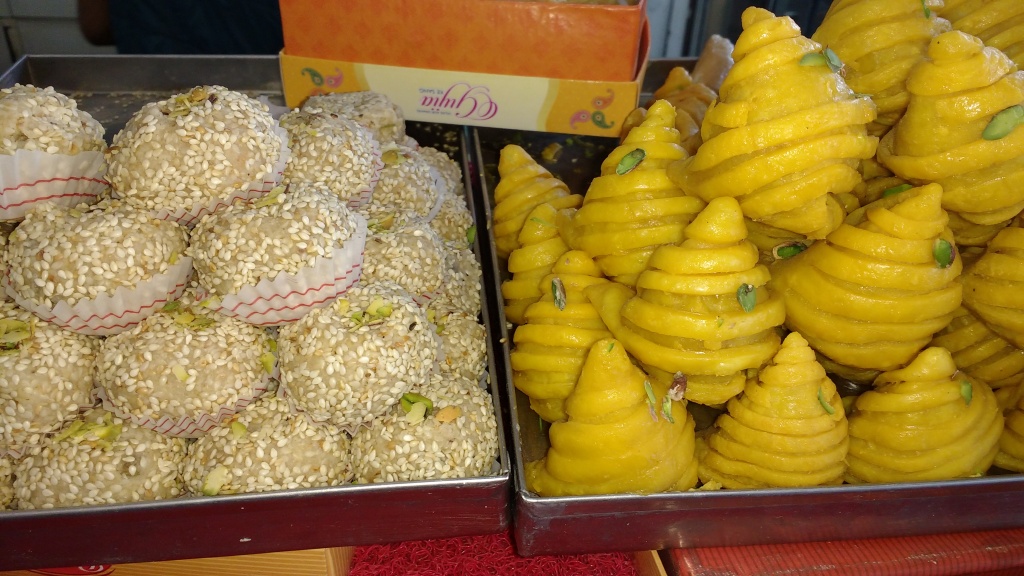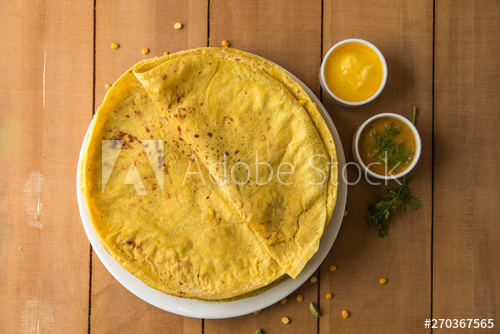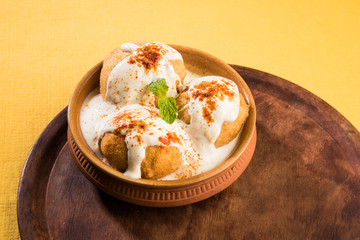Holi, The Festival Of Colours
In This Post:
- Mythology Stories About Holi
- Traditional Holi In Uttarakhand
- New Avatar Of Celebrations
- Traditional Foods
- Responsible Ways To Celebrate Holi
Its that time of the year when the atmosphere is boisterous and everyone… rich or poor, young or old and friend or foe is partaking in smearing each other with colours celebrating the most colorful festival of India.
HOLI.
India is blessed with a whole lot of festivals with its 29 states, 8 union territories and 18 major languages(1600 dialects), each having their own name and way of celebrating these festivals. Soon it will be time for Hindu celebrations of New Year across the country around March-April as each state prepares itself for traditional festivities.
Arunachal Pradesh celebrates a unique festival Sangken or the Water festival which is celebrated in April. However people sprinkle and drench each other with clear water sans any colors.
Holi heralds the spring and is celebrated to mark the harvest season. Winter ends with Holi and fresh crop of flowers begins the ‘Vasant Utsav’. Celebrated on two day with the first day dedicated to a bonfire or ‘Holika dahan’ on ‘chhoti holi’. The community collects dry wood and cow dung cakes to burn symbolizing the end of enmity, bad blood and all evil.
The next day begins with offering colored powder ‘Gulal’ to God before the people go wild playing with colors on streets. No age or gender or religion or community is untouched by the bonhomie and gaiety of this festival. People can be seen hugging each other wishing ‘Holi mubarak’ and ‘Bura na mano Holi hai (don’t hold a grudge… its holi)’

Photo by Yogendra Singh from Pexels
Mythology Stories About Holi :
Hiranyakashipu And Prahlad
The most popular mythological story is about the Asur king Hiranyakashipu(demon king) who after much penance was granted a boon. The boon practically made him invincible and immortal since he could not be killed in either day or night, in skies or on ground, neither by human nor any animal. Hiranakashipu was arch enemy of Lord Vishnu and hated anyone who worshiped him. Enraged at his own son Prahlad’s unwavering devotion and indefatigable faith in Vishnu, he challenged Vishnu to save Prahlad from being killed. Hiranyakashipu assigned his sister ‘Holika’ blessed by a boon of staying unharmed by fire to sit with Prahlad in fire. His blind hatred made him wish death on his own son. However Prahlad remained unharmed and the demoness was burned to ashes. Later Lord Vishnu took the form of half-lion and half-man to rid earth of Hiranyakashipu thus rendering the boon meaningless.
It is for this that ‘Holika dahan’ is observed on first day of festival in form of a bonfire.
Vrindavan And Krishna
Another story revolved around the playful Lord Krishna( Krishna is popular for Hindu scripture ‘Gita’) and his town Vrindavan-Brij. Krishna would playfully smear colour on all shepherdesses and his lover Radha’s face. The women in mock annoyance tried to drive away Krishna and other men by hitting them with sticks.
Even now ‘lath maar‘ holi is popular in Vrindavan-Braj. Folk- songs epitomize Radha -Krishna love and the holi that they celebrated-
श्याम पिया मोरी रंग दे चुनरियाऐसी पिया मोरी रंग दे चुनरियाधोबिया धोए चाहे ये सारी उमरियालाल न रंगाऊँ मैं , हरी न रंगाऊँअपने ही रंग में रंगदे चुनरिया…
Radha requests Krishna to color her soul with his love so deep that she would never need the frivolous external colors of her clothes.
Kaamdev And Shiva
There is another lesser known mythological story about Kaamdev- the god of love and Lord Shiva. Shiva was in deep trance and rage. The other Gods in heaven wanted Shiva to calm down. Kaamdev was entrusted with the task of making Shiva fall in love to soften his anger. Kaamdev turned on his magic on an unsuspecting Shiva and Goddess Parvati. When Shiva came to know of Kaamdev’s act, he burned Kaamdev. However Parvati intervened and Shiva granted Kaamdev’s life back on this day. Today offerings of mango are made for Kaamdev’s return to life.
How many mythological stories related to Holi do you know? Share them in comments!!
Traditional Holi In Uttarakhand:
Most North Indian states celebrate Holi in their own way. The villages in Uttarakhand still celebrate the festival in simpler traditional way.
Men and women assemble in separate gatherings thus ensuring merry making with total abandonment. Women finish their morning chores and gather to sing and dance without inhibitions. They tease each other and joke about amorous relationships. Men too in their own gathering indulge in some titillating chatter and sing to the beats of ‘dhol’. These gatherings of men and women are known as ‘Baithaki Holi’. Traditional folk songs are highlight of these gatherings.
But when its time to play with colors, men and women come together and are mindful of their behavior towards opposite gender.

I run away from wet Holi colors…but who can say no if someone applies Gulal so lovingly without messing? Do you love playing with wet colors?
How do you play Holi? I am not in favor of wet colors. Are you?
New Avatar Of Celebrations:

Till about 60 to 70 years ago, the festival of holi was celebrated with colors made of naturally appearing pigments. The red ‘Tesu’ (also known as Palash or Butea Monosperma) flowers that bloom in abundance during this time were boiled in water to make a pleasant smelling yellow tinted water to drench each other with on Holi.
This practice has sadly long been replaced by chemical colors. Water guns or ‘pichkari’ with fancy spray nozzles, water filled balloons and pigments like silver, gold and more have flooded the market.
Loud music blaring on speakers on roads is more of a nuisance. Alcohol has replaced milder thandai or bhang. Young men speed noisily on streets on their vehicles.
Traditional Foods:

Sweetmeats at a shop
I am a Maharashtrian by birth but have spent my growing up years in Uttar Pradesh with doctor parents posted to a new district every two years. My mother even with her busy schedule ensured celebrating festivals with whatever traditional foods she could find time to prepare. In the bargain I tasted best of both cuisines especially during festivals.
During this festival of colours, it meant Puran Poli in Maharashtrian traditions and Gujiya in North Indian style… and I love my sweets. No meal for me is complete without a sweet dish….and any kind of sweet mind you…to finish off.
Do you like sweets? Which is your favorite?
Every house made some unique family dishes. We would all gather together and roam the streets painted in all kinds of colors and visit other houses to greet and sample food. There was dal wadas and dahi wadas, onion pakoras and potato pakoras, Pani puri and aloo chaat. Here are a few popular traditional dishes that almost every home made:
Kaanji:

My fondest memory is of our next door neighbors ‘Kaanji’. My mother never got the proportion right and I have never tried making this pungent sour tangy liquid. The black carrot is allowed to ferment in sun in a glass bottle full of water along with mustard seeds. By the time of festival, the liquid is ready with hints of black carrots and pungency of mustard.
Gujiya:

Maharashtrians make ‘karanji’ or gujiya during Diwali but in North india it is made at Holi as well. So I got to eat this sweet calzone filled dry fruits, coocnut and mawa twice every year. In some homes the filling is of only drufruits and sugar while some make a softer moist filling with grated coconut. I prefer the dry fruits one.
Thandai:

This mix of spices and dry fruits in milk is a wholesome drink. The spices like cardamom and nutmeg give a distinct flavor. Thandai is so called for its cooling and rejuvenating effect. I have tried making this drink and loved it. Time to do the exercise again….
Puran Poli(Maharashtra):

These chana dal jaggery or sugar filled sweet chapatis are to die for with ta dollop of home made ghee. I make Puran Poli once a year because am not very adept at making them but Holi and Puran poli go hand in hand in Maharashtrian homes.
Dahi-Wada:

The curd soaked urad dal (black lentils) dumplings sprinkled with salt, pepper, chilli powder and roasted cumin powder is the lightest and most delicious savory snack you could ask for on Holi.
Bhang:
Now this is some fun provided it is taken in limited quantity. Fresh Cannabis leaves are ground to paste and either mixed in Thandai or made into fritters and pakoras. There is a certain intoxicating effect that lasts for few hours. But during this Holi festival everyone enjoys a little fun and high…no taboo attached to this during the celebrations.
Responsible Ways To Celebrate Holi
- Buy organic and herbal colors. There is plenty of choice available these days.
- Its fun to drench each other with colored water but water is a precious thing now a days. It helps to be mindful of wasting water and control the usage.
- Applying colors to strangers and women is okay only with their consent. If someone especially women say ‘NO’…be respectful. When a woman says ‘NO’ it usually means ‘NO’ and not a coy way to say come hither.
- Consuming Bhang laced foods are fun in small quantities and not when it intoxicates you enough to cause discomfort to others.
- It is a festive celebration and should not become nuisance for old and unwell people around us. Keep those decibels of music and loudspeakers down and for a limited time.
- Unruly and mob behavior is scary for kids. Be mindful of the innocent children.
- Enjoy
How do you celebrate Holi?
Pin It


awesome art and cultural post sharing thank u so much
LikeLike
Thank you Pushpendra.
LikeLike
I loved your recipe of ‘lal mirch’ but not able to post comment. it asks for log in?
LikeLike
My first proper Holi celebration was last year and that too in Uttarakhand with a family. Your post brought back the memories.
LikeLiked by 1 person
I am glad you experienced Holi of Uttarakhand. They still celebrate with some innocence. The cities have become more mob like celebrations which personally I have stopped enjoying.
LikeLiked by 1 person
That is very true. It was a nice time with that family. Glad to know that you are still very active in this blog world.
LikeLiked by 1 person
Happy Holi. Here is my blog, written a few Holis back, capturing the mood of the occasion:
https://chapter18.wordpress.com/2010/02/21/the-wellspring-of-joy/
LikeLike
Holi is the festival of colours, and especially celebrated in India, no religion no cast matters every one enjoys this festival with full of energy.
LikeLiked by 1 person
Yes true. Love and happiness conquers all
LikeLike
Happy Holi!!!
LikeLiked by 1 person
Thank you. To you too
LikeLiked by 1 person
Gujiya, thandai, puranpoli,mmmm,you make my mouth water.Very nice pictures.So appetizing….
LikeLike
Really fantastic post.
LikeLiked by 1 person
Thank you. Hope you read other stories too and like them.
LikeLike